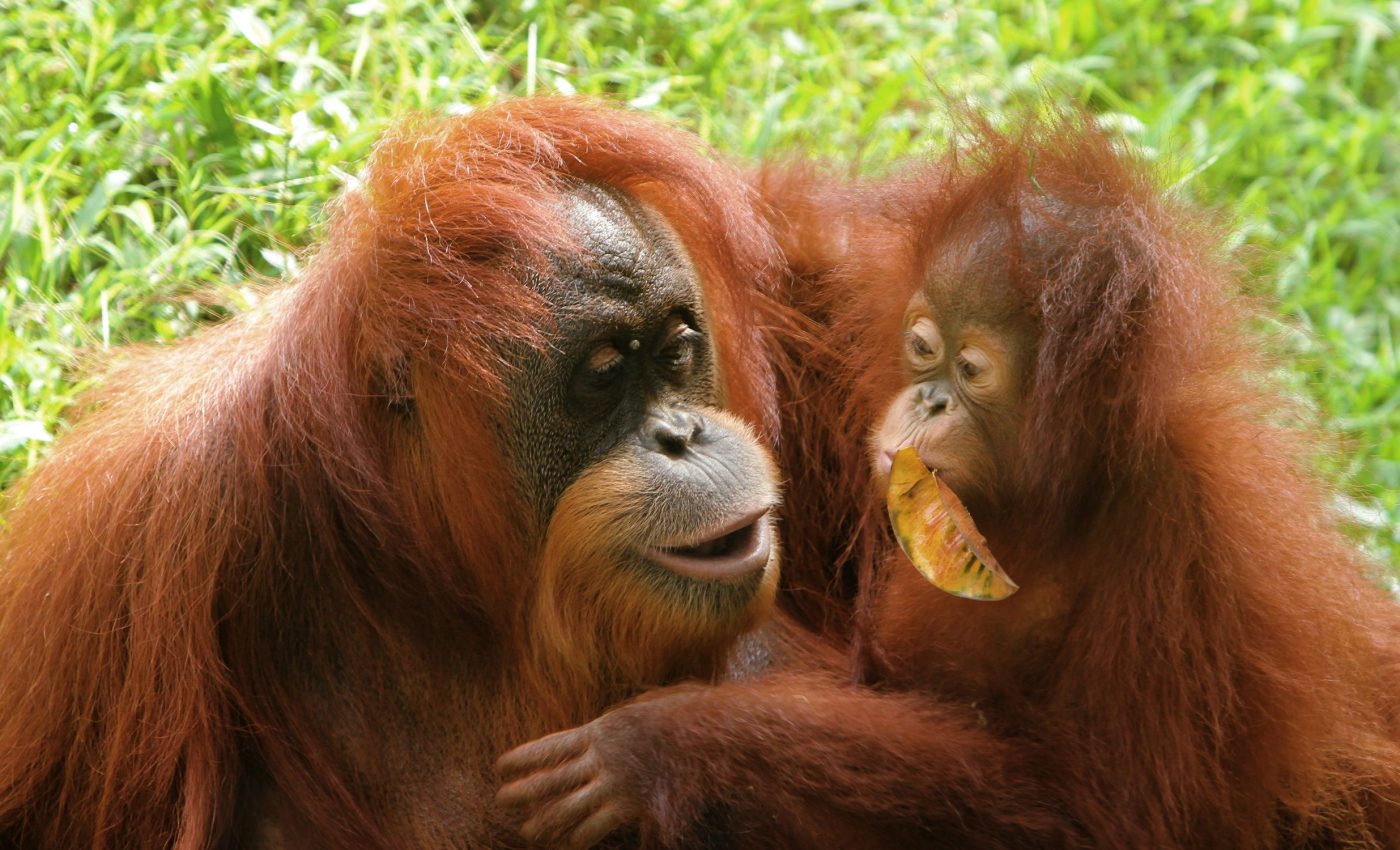
Orangutans use complex vocal patterns found in human language
Language is often considered the hallmark of human intelligence, a complex system that enables us to share thoughts, express emotions, and convey intricate messages.
For years, scientists believed that recursion – the ability to nest phrases within phrases – was a defining characteristic of human language. However, new research challenges this view, suggesting that wild orangutans also use recursive communication.
This discovery offers a glimpse into the evolutionary origins of human language, potentially dating back millions of years. By studying Sumatran orangutans, researchers have found evidence of structured vocal patterns previously thought to be exclusive to humans.
This breakthrough not only reshapes our understanding of primate communication but also provides critical insights into how complex language structures may have developed.
The roots of human language
Language thrives on repetition. Imagine a chain of events like this: “This is the house that Jack built, that sheltered the cat, that chased the mouse, that stole the cheese.”
Each segment builds on the one before, stacking phrases to form a layered, connected structure. This pattern is called recursion.
The pattern stacks phrases like Russian nesting dolls. Each layer connects to the next, creating a complex yet understandable message. Humans use it all the time, embedding clauses within sentences to convey rich and detailed thoughts.
Orangutans use recursion too
For years, scientists believed that only humans could use such layered communication. But researchers from The University of Warwick have uncovered a startling discovery. Sumatran orangutans, it turns out, use the same pattern.
“When analyzing the vocal data of alarm calls from female Sumatran orangutans, we found that the rhythmic structure of orangutans’ sounds made were self-embedded across three levels – an impressive third-order recursion,” noted Dr. Chiara De Gregorio, who led the study.
In other words, orangutans aren’t just making noise. They’re stacking vocal sounds, creating layers that echo the structure of human language.
Language patterns in orangutan calls
The orangutans’ calls didn’t follow a single, simple rhythm. Instead, they built three distinct layers.
First, they strung together small sounds, forming short sequences. Next, they combined these sequences into longer, more complex bouts. Finally, they arranged those bouts into extended, rhythmic series.
Each level nested within the next, forming a layered structure. And it wasn’t random. The rhythm changed based on the type of threat the orangutans faced.
Orangutans use rhythm as a tool
Picture a tiger lurking nearby. The orangutan’s calls grow rapid, urgent, and insistent. Now, imagine a less direct threat – a piece of cloth with bright spots. The calls slow down, becoming irregular, almost hesitant.
This adaptability is no accident. Orangutans use rhythm as a tool, adjusting their vocal patterns to fit the situation.
Dr. De Gregorio and her team noticed these shifts, hinting that orangutans are communicating specific information about their surroundings.
A glimpse into the past
If recursion exists in orangutan calls, what does that mean for us? Dr. De Gregorio sees it as a glimpse into our evolutionary past.
“This discovery shows that the roots of one of the most distinctive features of human language – recursion – was already present in our evolutionary past,” she noted.
In other words, recursion might not be a human invention. It could be a skill we inherited from ancient ancestors – a skill that orangutans still use today.
Orangutan connection to human language
Language didn’t appear overnight. It evolved, layer by layer, like the vocal sequences of the orangutans. The researchers believe that studying these calls could help us understand how human language began.
Orangutans, with their recursive vocal structures, may hold clues to how our ancestors communicated. Perhaps they, too, stacked sounds, building rhythms to convey complex ideas.
Over time, these rhythms could have evolved into more structured language systems.
The bigger picture
Why does any of this matter? Because if recursion isn’t uniquely human, then neither is the complexity of thought it enables.
Orangutans are showing us that the seeds of language run deeper than we thought, stretching back millions of years.
By preserving these animals and their habitats, we’re not just protecting a species. We are safeguarding a link to our own evolutionary history – a history told through layers of sound, rhythm, and meaning.
Language research in primates
Dr. De Gregorio and her team have opened a door to new questions. How widespread is recursion among non-human primates? Do other species use similar vocal structures?
For now, the calls of Sumatran orangutans echo through the forest, carrying a message that’s both ancient and new. And in those layered rhythms, we might just hear the distant roots of our own language, reverberating through time.
The study is published in the journal Annals of the New York Academy of Sciences.
—–
Like what you read? Subscribe to our newsletter for engaging articles, exclusive content, and the latest updates.
Check us out on EarthSnap, a free app brought to you by Eric Ralls and Earth.com.
—–













